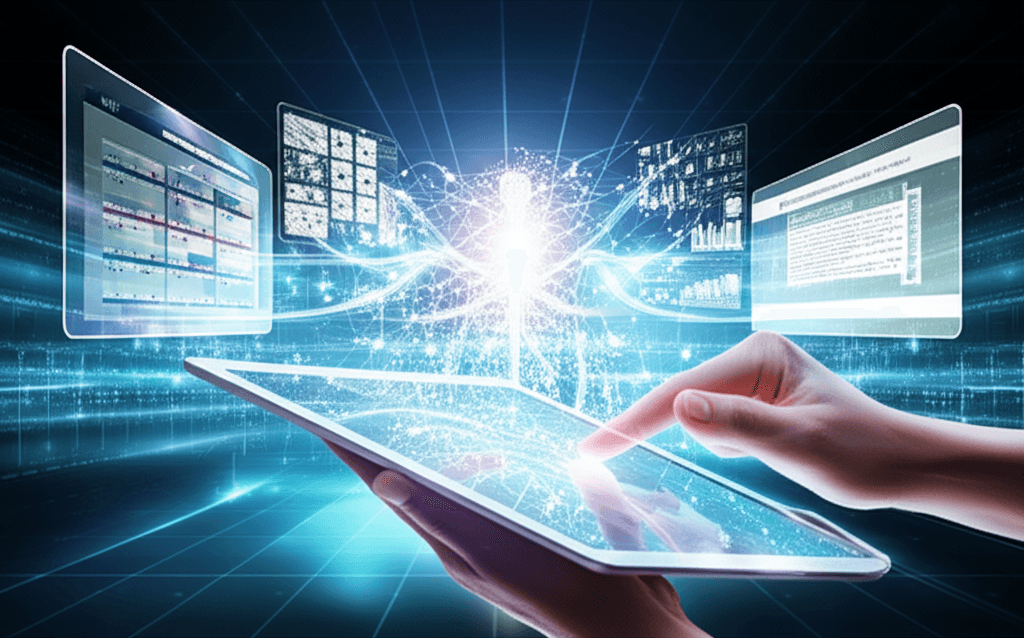OpenAI's ChatGPT Agent: AI Now Acts Autonomously on Complex Tasks
OpenAI's ChatGPT agent transcends chat, becoming a true autonomous assistant capable of executing complex, multi-step digital tasks.
July 22, 2025

OpenAI has taken a significant stride toward a long-held vision of creating versatile, autonomous AI agents capable of performing complex, multi-step tasks on a user's behalf. The recent introduction of the ChatGPT agent marks a pivotal moment, moving beyond simple conversational AI to an active assistant that can reason, plan, and execute tasks within its own virtual computer environment.[1][2][3] This development is not a sudden breakthrough but rather the culmination of years of dedicated research and a strategic vision that the company has been pursuing since at least 2017, rooted in the foundational principles of reinforcement learning and building upon a powerful pre-trained base.[4][5] The new agent can handle a wide array of requests, from analyzing a user's calendar to brief them on upcoming meetings, to planning and purchasing ingredients for a meal, and even conducting competitive analysis to create a slide deck.[1][6]
The core of this new capability is what OpenAI calls a "unified agentic system," which integrates the strengths of its previous specialized tools.[1][3] It combines the web navigation and interaction abilities of "Operator" with the in-depth information synthesis skills of "Deep Research," all powered by the conversational intelligence of ChatGPT's underlying models.[2][6][7] This fusion allows the agent to fluidly shift between reasoning and action.[6] For instance, it can access a user's calendar via an API, use a text-based browser for efficient data extraction, and interact with visual elements on websites designed for humans.[1] The agent operates within a virtual computer, giving it access to a suite of tools including both visual and text-based browsers, a terminal for running code, and direct API access.[1][3] This setup allows it to perform complex workflows, such as downloading a file, manipulating it with code, and then presenting the output visually.[1]
The technological underpinnings of the ChatGPT agent are heavily reliant on reinforcement learning (RL), a machine learning paradigm where models learn through trial and error by receiving feedback for their actions.[8][9][10] OpenAI has been a proponent of RL for years, releasing its "OpenAI Gym" toolkit in 2016 to foster research in this area.[5][11][12] The company's belief is that for AI agents to become truly powerful, they need to be optimized end-to-end for the specific tasks they are meant to perform, rather than simply stringing together pre-programmed models.[13] The model powering the new agent was specifically trained on complex tasks requiring multiple tools, fine-tuned to develop effective strategies for problem-solving.[3][13] This approach contrasts with more rigid, graph-based systems, allowing the model to make its own decisions and adapt to the countless scenarios it might encounter in the real world.[13]
The implications of this advanced AI agent for the industry are profound, signaling a shift from passive chatbots to proactive, task-completing assistants.[14] The ability to automate complex knowledge work tasks could dramatically increase efficiency across various sectors.[15][16] For example, a business could automate the generation of market research reports, or a developer could automate software testing and debugging workflows.[14][16] On an internal benchmark designed by OpenAI, the agent's output was found to be comparable to or better than that of humans in roughly half of the cases for complex knowledge work tasks.[16] However, the technology is still in its early stages and not without limitations.[7] Tasks can be slow to complete, making the agent better suited for non-time-sensitive research and analysis rather than immediate actions.[17] Furthermore, OpenAI acknowledges the new risks associated with an AI that can take actions, such as the potential for malicious prompts hidden on webpages to trick the agent.[18] To mitigate this, the company emphasizes user control, requiring permission for significant actions like submitting forms or making purchases, and has implemented safeguards to reject harmful or illegal requests.[2][6][18]
In conclusion, the launch of the ChatGPT agent represents a tangible step toward OpenAI’s long-standing goal of creating artificial general intelligence that benefits all of humanity.[4][19] By building on years of research in reinforcement learning and large-scale models, OpenAI has developed a tool that moves beyond language generation to task execution.[1][3][13] This development not only enhances the capabilities of personal AI assistants but also pushes the entire industry to reconsider the potential of autonomous systems.[14] While challenges around speed, accuracy, and security remain, the agent's ability to reason, research, and act autonomously heralds a new era of human-computer interaction, where AI becomes a true partner in accomplishing complex digital work.[6][17][18]
Sources
[1]
[5]
[7]
[8]
[9]
[10]
[11]
[12]
[13]
[14]
[15]
[16]
[19]